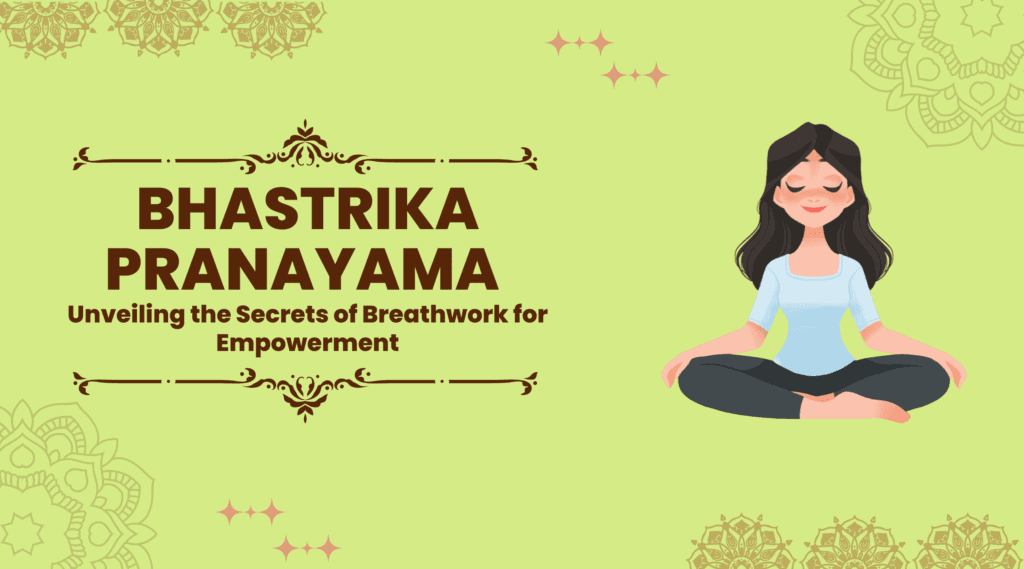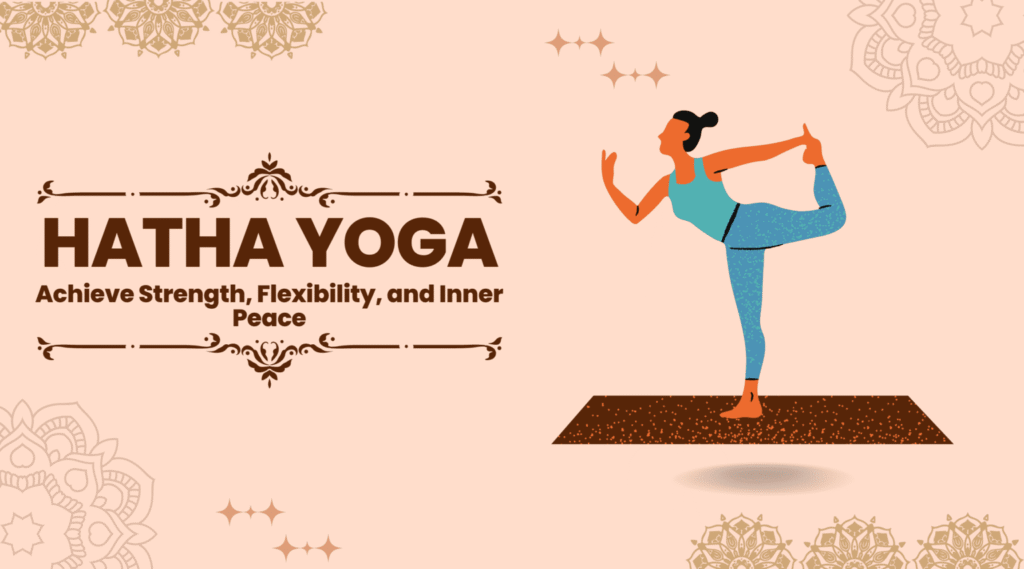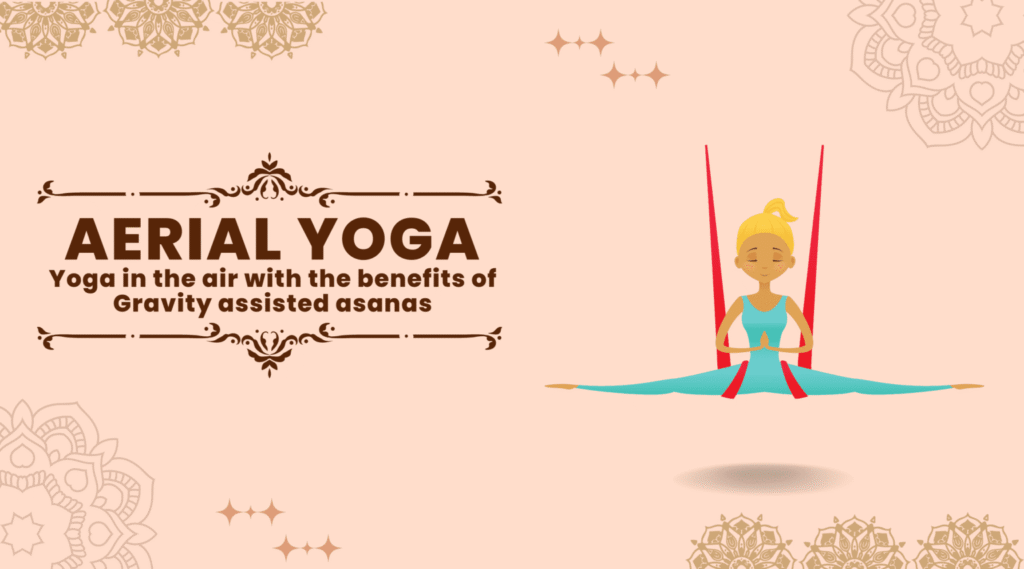
Introduction
Bhastrika Pranayama is a breathing technique in yoga that involves rapid and forceful breath while inhaling and exhaling both. The word “bhastrika” is a sanskrit word that means bellows or pump, that refers to the movements of the lungs and diaphragm during the practice.
It is also known as “bellows breath” because the movements of the lungs and diaphragm resemble the pumping action of a bellows. The rapid inhalations and exhalations of this breathing technique help to increase oxygen supply to the body. Consequently, it boosts energy levels, improve respiratory function as well as enhance mental clarity and focus.
There is a belief that this pranayama can help to balance the energy in the body and stimulate the chakras, or energy centres. It is often used in conjunction with other yoga practices such as asana (yoga poses) and meditation to create a well-rounded yoga practice. Generally, using this pranayama with other yoga techniques addresses the physical, mental, and spiritual aspects of the individual.
History of Bhastrika Pranayama
The ancient Indian texts of yoga, such as the Hatha Yoga Pradipika and the Yoga Sutras of Patanjali have the mention of this breathing technique . These texts describe various pranayama techniques, including Bhastrika, in order to purify the body and mind and prepare them for deeper states of meditation.
In the Hatha Yoga Pradipika, Bhastrika Pranayama is one of the six cleansing techniques, known as shatkarma. These practices provide great support in purifying toxins and impurities from the body and balance the energy flow in the body.
The practice of this Pranayama has been passed down through generations of yogis and has remained an important aspect of traditional yoga practices. Today, various styles of yoga practise this breathing technique because this is a powerful tool for improving physical, mental, and spiritual well-being.
Suggested: Best Yoga Retreats And Yoga Teacher Training In Rishikesh
Benefits of Bhastrika Pranayama
Bhastrika offers various benefits to our body that are mentioned as under:
1. Improves Respiratory Function: Bhastrika Pranayama is excellent for improving respiratory function as it increases the capacity of the lungs, clears the nasal passage and helps to reduce stress in the respiratory system.
2. Boosts Immunity: Regular practice of Bhastrika Pranayama can help boost the immune system and protect against illness and disease.
3. Increases Energy: Bhastrika Pranayama can help to boost energy levels by increasing oxygen supply to the body and stimulating the nervous system.
4. Relieves Stress and Anxiety: The rapid breathing and rhythmic movements of the diaphragm during Bhastrika Pranayama help to calm the mind and reduce stress and anxiety.
5. Enhances Mental Clarity: Bhastrika Pranayama is believed to help enhance mental clarity and focus, which can help to improve productivity and concentration.
Techniques to Practise Bhastrika Pranayama
Here are the techniques & steps to follow:
1. Sit comfortably in a seating position and keep your spine straight while your hands resting on your knees. Now close your eyes and start taking deep breaths to relax your body.
2. Use your both nostrils to inhale deeply and fill your lungs with air fully.
3. Exhale forcefully through both nostrils, contracting your abdominal muscles and pushing the air out of your lungs.
4. Repeat step 2 and step 3, inhaling and exhaling rapidly and forcefully. The inhalations and exhalations should be equal in duration and intensity.
5. While you inhale, you’re supposed to expand your abdomen and when you exhale, your should contract your abdomen.
6. Start with a few rounds of Bhastrika Pranayama, gradually increasing the number of rounds and the duration of each round.
7. After completing the practice, sit quietly for a few moments to observe the effects of the practice on your body and mind.
Cautions while practising Bhastrika Pranayama:
1. Start slowly and gradually increase the pace because this Pranayama is a forceful breathing technique. So it’s important that one should start this practice with a slow pace and gradually increase it as you become more comfortable with it.
2. Individuals with respiratory conditions such as asthma or heart conditions should consult with their healthcare provider before practising this Pranayama.
3. Do not overexert yourself during the practice. As this this pranayama is a powerful breathing technique, so you might feel dizzy, lightheaded, or uncomfortable. If you feel as such, just stop the practice immediately.
4. Pregnant women should avoid practising this breathing technique.
5. Always practise this Pranayama under the guidance of a qualified yoga instructor to ensure that you are doing the technique correctly and safely.
6. Breathe through your nose because this will help to warm and humidify the air as you breathe in. Moreover, it will help to prevent you from hyperventilating also.
7. Keep your back straight and your shoulders relaxed. This will help to ensure that you are breathing from your diaphragm and not your chest.
8. Focus on your breath. Don’t worry about counting the breaths or trying to control your thoughts. Simply focus on the feeling of the breath as it moves in and out of your body.
Conclusion
Bhastrika Pranayama is a powerful and ancient technique of yogic breathing yogis have been practising this breathing technique for centuries. This pranyama helps to purify the body, balance the energy flow as well as awaken spiritual energy. The practice involves rapid and forceful inhalations and exhalations.
This process of rapid and forceful inhalations and exhalations help to increase oxygen supply, improve respiratory function, and stimulate the chakras. It is important to practise Bhastrika Pranayama under the guidance of a qualified yoga instructor and to exercise caution, especially if you have any respiratory or heart conditions. When practised regularly, Bhastrika Pranayama can have profound benefits for physical, mental, and spiritual well-being.
You Can Also Read


